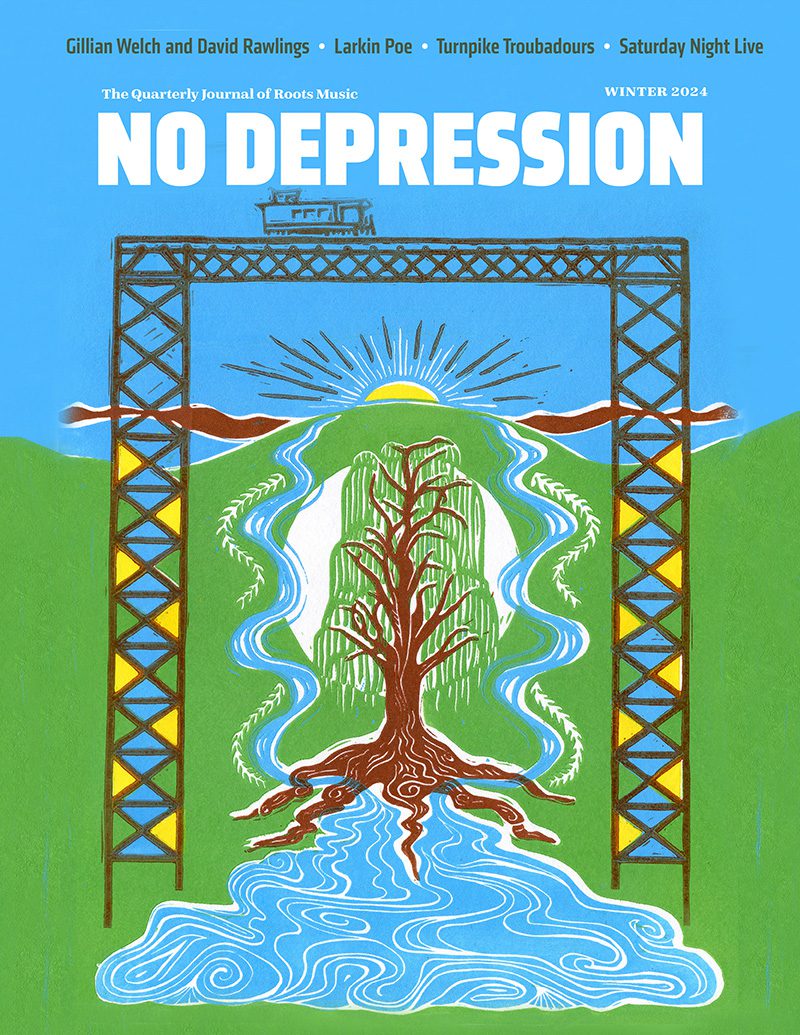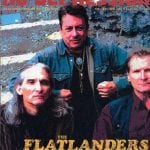Robin & Linda Williams – Keeping the home fires burning
Garrison Keillor doesn’t often smile in public. He can’t afford to, for deadpan drollness is crucial to his Lake Wobegon monologues. But when he sings with Robin & Linda Williams, he can’t help it. He beams like a lantern.
I’m thinking in particular of a February night in 1990 when Keillor, the Williamses and Kate McKenzie performed as the Hopeful Gospel Quartet at the Birchmere in northern Virginia. For the first half of the show, the radio host barely cracked a joke; he was content to slouch in the background, supplying the bass harmonies on tunes ranging from the Stanley Brothers to the Staple Singers. And he grinned like a pitcher who has hit a home run, overjoyed to accomplish something outside his main specialty.
The Williamses and McKenzie took almost all the lead vocals, turning Keillor’s vision of rural/small-town America into song. Keillor’s monologues on his long-running radio show, “A Prairie Home Companion”, conjure up a place — part real and part mythical — where narrow prejudices are always trumped by basic decency, where Protestant reticence breaks up like spring ice before the press of raw emotions, and where the appearance of provincial conformism is contradicted by quirky eccentricity. All that was in the Williamses’ music.
Linda’s frizzy red hair sprawled in all directions, while Robin’s straight brown hair was pulled back into a ponytail. They both played acoustic guitar (supplemented by Linda’s banjo and Robin’s harmonica). There’s something about the timbre of hollow wooden instruments that fits lyrics about farms, ranches, country churches and one-street towns, just as there’s something about metallic horns and electric pick-ups that fits lyrics about city streets, factories, smoky dives and interstate highways.
The Williamses’ voices had the same timbre as their guitars — an open, ringing quality, rounded off without any sharp edges. As Keillor described it in his liner notes for their 1990 album The Rhythm Of Love, “Individually, their voices can melt cheese, and in duet, they can do all-purpose welding.”
And yet, like Keillor, the Williamses never give into the temptation to paint country life as a romantic utopia. Their songs are filled with rapacious banks, cruel lovers, drunken spouses and capricious weather. They make no claims that life in the hinterlands is any better, or any worse, than life in the city. It’s just different, and it deserves its own music.
Over the course of sixteen albums, Robin and Linda have ranged from honky-tonk two-steps to Baptist hymns, from political folk songs to bluegrass breakdowns, from crisp swing to comic talking blues. What ties it all together is the rural character of the music. Whether the songs are rooted in an Appalachian hollow or a Michigan campfire, a Mississippi cottonfield or a South Dakota ranch, they’re all shaped by an environment where there’s fewer people and more space, where a livelihood is scratched from the land with difficulty.
“We liked all these different kinds of music,” Robin remembers, “and at some point, it became clear that rural roots tied it all together. It became even clearer when we moved to the country. When you live out in the country, you have to know where your water’s coming from, because there’s no city water system to hook up to, and you have to know when the preacher and the doctor are going to be around, because they’re not there all the time.
“So you understand what a blues singer means when he says, ‘You don’t miss your water till your well runs dry.’ When Hank Williams talks about the preacher coming by on Sunday, you know what he means.”
“When we lived in Nashville,” Linda adds, “everyone was always talking about the deal they had or the deal they were going to get. It got tiresome. Now we live in the Shenandoah Valley, outside Staunton, and when we come off the road, we talk to people about who died, has there been much rain, how is the Virginia basketball team doing. It makes you write different songs.”
Both of the Williamses are accomplished songwriters; their material has been recorded by Emmylou Harris, Tom T. Hall, Holly Near and others. But their latest release, Visions Of Love, features thirteen songs written by other people. The idea for an all-covers project came from Keillor, the album’s producer.
“I told the Williamses that they should do an album focused on their singing,” Keillor explains. “The album should consist of songs they’d known for many years because I believe it takes that long to get inside a song so you can sing it unself-consciously. I offered to produce the album, and Sugar Hill took me up on it, so there we were.”
“We wanted to sing songs by people who had influenced us,” Linda recalls, “so we included songs by Hank Williams, the Carter Family, the Stanley Brothers, the Louvin Brothers, Merle Haggard, Molly O’Day, Roscoe Holcomb and Jimmie Rodgers. We wanted to put a Dylan song on, but we never found one that hadn’t been done to death. We sent Garrison 30 to 40 songs, and he picked out the basic list.
“But after we had recorded a bunch of songs, Garrison came up with the title, Visions Of Love, which was a lyric from the Carter Family song, ‘I’ll Twine ‘Mid The Ringlets’, and he wanted to hang the concept of the album around that. He said he wanted to add a real sweet song and something by a modern songwriter. I said, ‘I have this Springsteen song, “If I Should Fall Behind” — do you want to hear it?’
“I wasn’t sure it fit, but every time we left it out of a sequence, Garrison said, ‘I really miss that Springsteen song.’ We’ve been using it on this last tour as an encore song, and people just love it. The more we do it, the older it feels.”




